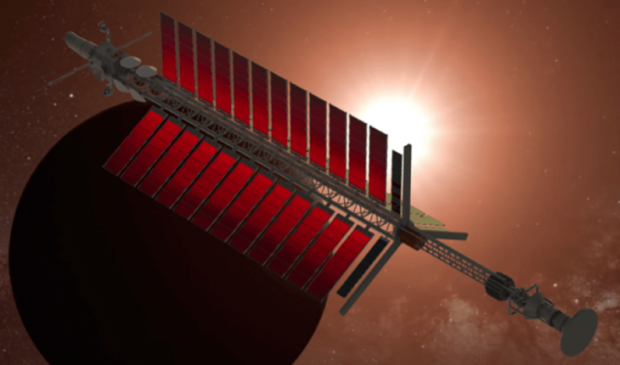
Breaking News
 The Days of Democracy Are Over
The Days of Democracy Are Over
 Elon Musk Described an AI Device to Replace Phones in 5 Years
Elon Musk Described an AI Device to Replace Phones in 5 Years
 Deposit Insurance For Billionaires?
Deposit Insurance For Billionaires?
 Rep. Troy Balderson Is Right: Coal And Gas Drive Affordable, Reliable, And Clean Energy
Rep. Troy Balderson Is Right: Coal And Gas Drive Affordable, Reliable, And Clean Energy
Top Tech News
 Graphene Dream Becomes a Reality as Miracle Material Enters Production for Better Chips, Batteries
Graphene Dream Becomes a Reality as Miracle Material Enters Production for Better Chips, Batteries
 Virtual Fencing May Allow Thousands More Cattle to Be Ranched on Land Rather Than in Barns
Virtual Fencing May Allow Thousands More Cattle to Be Ranched on Land Rather Than in Barns
 Prominent Personalities Sign Letter Seeking Ban On 'Development Of Superintelligence'
Prominent Personalities Sign Letter Seeking Ban On 'Development Of Superintelligence'
 Why 'Mirror Life' Is Causing Some Genetic Scientists To Freak Out
Why 'Mirror Life' Is Causing Some Genetic Scientists To Freak Out
 Retina e-paper promises screens 'visually indistinguishable from reality'
Retina e-paper promises screens 'visually indistinguishable from reality'
 Scientists baffled as interstellar visitor appears to reverse thrust before vanishing behind the sun
Scientists baffled as interstellar visitor appears to reverse thrust before vanishing behind the sun
 Future of Satellite of Direct to Cellphone
Future of Satellite of Direct to Cellphone
 Amazon goes nuclear with new modular reactor plant
Amazon goes nuclear with new modular reactor plant
 China Is Making 800-Mile EV Batteries. Here's Why America Can't Have Them
China Is Making 800-Mile EV Batteries. Here's Why America Can't Have Them
Mach Effect Propulsion Levels Becoming Significant and Reliable

In 2017-2018, there was belief that significant propulsion effects were realized. The actual experiments were at 1-5 micronewtons but there was hope of scaling it with increased power to 60 millinewtons with a kilowatt system. However, errors were found.
Woodward has built a new kind of mount that positions the piezoelectric disk stack in the center of two rods riding on ball bushings. The new thruster mount does not damp the harmonized vibrations that are key to propulsive force in these devices.
The MEGA drive has been propulsive force measured at more than 100-micronewtons instead of the 1 to 5-micronewton range. The MEGA thruster can now be seen moving by about half a millimeter.
The effect can only be seen for a few seconds. The resonant frequency constantly changes as the device heats up and varies with the experimental setup. Chip Akins, an engineer, is building a custom amplifier that will track the resonant frequency as it changes. If this chip works as intended then the MEGA drive will produce a sustained thrust.
Mike McDonald, an aerospace engineer at the Naval Research Laboratory in Maryland, will independently test the system. Testing will likely begin in 2021 after the pandemic. If all goes well a small device could be taken into space late in 2021 or in 2022.

 China Innovates: Transforming Sand into Paper
China Innovates: Transforming Sand into Paper

